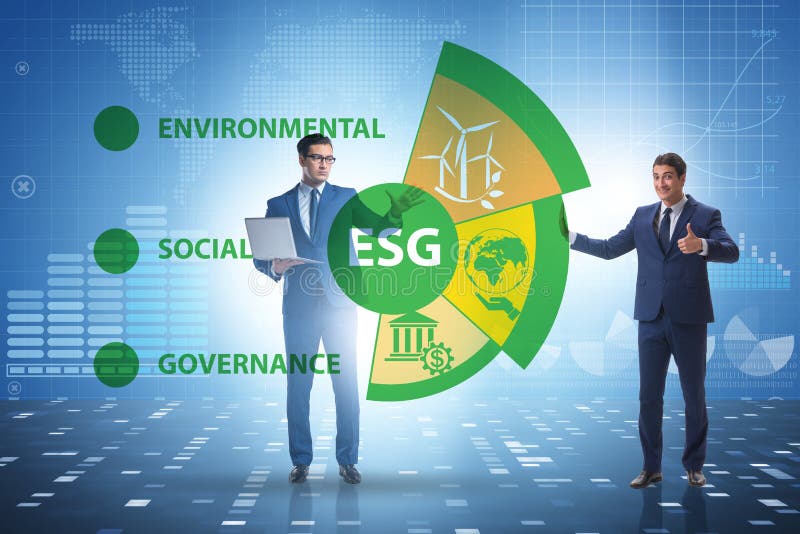The Transformation of Financial Value
The fundamental definition of financial value is undergoing a profound transformation. For decades, businesses operated under a relatively simple equation: maximize short-term profits while complying with basic regulations. Today, this equation has evolved into something far more complex and multidimensional.
Environmental, Social, and Governance (ESG) factors—once considered "soft" concerns separate from "hard" financial metrics—are now recognized as material drivers of long-term value creation and risk management. This isn't merely a philosophical shift; it's a market-driven reality reshaping how capital is allocated, how risks are assessed, and ultimately, how business success is defined.
The numbers tell a compelling story: companies with strong ESG performance now enjoy a 2.6x higher valuation multiple than their peers, according to research from McKinsey. Meanwhile, Bloomberg Intelligence projects ESG assets will exceed $50 trillion by 2025, representing more than a third of total global assets under management.
This transformation isn't happening in isolation. It's being driven by five converging forces that are making sustainable finance not just a moral imperative but a business necessity.
The Five Forces Driving Sustainable Finance
1. The Regulatory Revolution
The regulatory landscape around ESG disclosure and compliance is evolving at unprecedented speed. The European Union's Sustainable Finance Disclosure Regulation (SFDR) and Corporate Sustainability Reporting Directive (CSRD) have established the world's most comprehensive mandatory ESG reporting framework. The U.S. Securities and Exchange Commission has proposed climate disclosure rules that would fundamentally change reporting requirements for public companies.
These aren't isolated developments but part of a global convergence toward standardized ESG disclosure. The International Sustainability Standards Board (ISSB) is creating a global baseline for sustainability reporting that will eventually be adopted across jurisdictions.
For businesses, this means ESG reporting is rapidly transitioning from voluntary to mandatory, from qualitative to quantitative, and from peripheral to central in financial communications. Companies that proactively build robust ESG data infrastructure will gain a significant compliance advantage while those that delay will face increasing regulatory risk.
2. The Capital Reallocation
Capital is flowing toward sustainability at an accelerating rate. ESG-focused funds captured $649 billion in investments in 2021 alone, and the trend is only strengthening. This shift isn't limited to specialized "impact investors" but includes mainstream asset managers who are integrating ESG factors into their core investment processes.
BlackRock, the world's largest asset manager, now evaluates all investments through an ESG lens. Vanguard, State Street, and other institutional investors are following suit, creating a fundamental shift in how capital is allocated.
This capital reallocation creates both opportunity and risk. Companies with strong ESG performance increasingly enjoy lower costs of capital, better access to financing, and more stable investor bases. Conversely, businesses with poor ESG profiles face higher financing costs and potential exclusion from investment portfolios.
3. The Talent Imperative
The competition for skilled talent has never been more intense, and ESG performance has become a critical factor in attracting and retaining the best people. A Deloitte survey found that 49% of Gen Z and 44% of Millennials have made career choices based on personal ethics, with company sustainability commitments being a key decision factor.
This talent preference creates a direct link between ESG performance and human capital—often a company's most valuable asset. Organizations with authentic sustainability commitments are seeing 26% higher retention rates and 58% better success in recruiting top candidates, according to research from IBM.
As demographic shifts continue, with younger generations representing an increasing percentage of the workforce, this ESG talent premium will only increase.
4. The Consumer Evolution
Consumer preferences are increasingly aligned with sustainability values. A global survey by Simon-Kucher & Partners found that 85% of consumers have shifted their purchasing behavior toward more sustainable options in the past five years.
This shift is particularly pronounced in younger demographics, with 73% of Gen Z consumers willing to pay more for sustainable products. However, these same consumers are highly attuned to "greenwashing" and demand authentic sustainability commitments backed by transparent reporting.
For consumer-facing businesses, this creates both opportunity and risk. Companies with genuine sustainability credentials can command premium pricing and build deeper brand loyalty, while those perceived as inauthentic face reputational damage and consumer backlash.
5. The Risk Recalibration
Perhaps most fundamentally, businesses and investors are recalibrating their understanding of risk to incorporate ESG factors. Climate change alone presents physical risks to operations, supply chains, and markets that cannot be ignored in financial planning.
Social factors like labor practices, community relations, and diversity and inclusion have proven material to business performance and reputation. Governance issues like board composition, executive compensation, and ethical business practices directly impact operational resilience and regulatory exposure.
This risk recalibration is changing how businesses allocate capital internally, with ESG considerations increasingly integrated into capital expenditure decisions, merger and acquisition strategies, and long-term business planning.
Beyond Compliance: Creating Value Through ESG Integration
While regulatory compliance often drives initial ESG efforts, companies that create the most value approach sustainability as a strategic opportunity rather than a compliance burden. This requires moving beyond superficial ESG initiatives to integrate sustainability into core business strategy and operations.
1. Strategic Materiality Assessment
Effective ESG integration begins with identifying which environmental, social, and governance factors are most material to your specific business. This requires a structured materiality assessment that considers:
- Industry-specific ESG factors (using frameworks like SASB Standards)
- Geographic considerations based on operational locations
- Stakeholder priorities (investors, customers, employees, communities)
- Time horizons (short, medium, and long-term impacts)
A global consumer goods company I advised conducted a comprehensive materiality assessment that identified water stewardship, packaging waste, and labor conditions in their agricultural supply chain as their most material ESG issues. This focused assessment allowed them to allocate sustainability resources where they would create the most business value rather than trying to address every possible ESG concern.
2. Integrated Financial Analysis
Leading companies are moving beyond treating ESG as a separate consideration and instead integrating sustainability factors directly into financial analysis and decision-making. This includes:
- Incorporating carbon pricing into capital expenditure decisions
- Quantifying ESG risks in enterprise risk management
- Linking executive compensation to sustainability metrics
- Developing integrated financial and sustainability reporting
A manufacturing client implemented an internal carbon price of $40 per ton in their capital allocation process, which shifted investment toward more energy-efficient equipment. The resulting energy savings delivered a 24% higher return on investment than their previous approach, demonstrating how ESG integration can drive financial performance.
3. Sustainable Product Innovation
ESG considerations are increasingly driving product and service innovation that creates new revenue streams and competitive differentiation. This includes:
- Redesigning products for circularity and reduced environmental impact
- Developing services that help customers improve their own sustainability
- Creating new business models that align profit with positive impact
A technology company I worked with developed a cloud-based energy management system that helps their customers reduce carbon emissions. This offering not only generated $140 million in new annual revenue but also strengthened their brand position as a sustainability leader in their industry.
4. Supply Chain Transformation
For many businesses, the majority of their environmental and social impact—and risk—lies in their supply chain. Leading companies are transforming supplier relationships to address these impacts through:
- Collaborative supplier development programs focused on sustainability
- Enhanced traceability and transparency systems
- Incentives for suppliers that exceed sustainability standards
- Joint innovation initiatives to solve shared sustainability challenges
A food and beverage company implemented a supplier financing program that offered preferential rates to suppliers meeting specific sustainability criteria. This reduced supply chain emissions by 17% while strengthening relationships with key agricultural producers.
Measuring What Matters: The Evolution of ESG Metrics
As sustainable finance matures, the metrics used to measure ESG performance are becoming more sophisticated and standardized. This evolution is critical for businesses seeking to demonstrate authentic sustainability commitment and performance.
1. From Outputs to Outcomes
Leading companies are shifting from measuring sustainability outputs (like policies implemented or dollars spent) to measuring actual outcomes and impacts. This includes:
- Absolute reduction in greenhouse gas emissions rather than just efficiency improvements
- Measurable improvements in biodiversity and ecosystem health
- Quantifiable social impacts like improved community health outcomes or economic mobility
A renewable energy company moved beyond reporting installed capacity to measuring actual carbon displacement and community economic benefits from their projects, providing a more meaningful picture of their impact.
2. From Annual to Real-Time
The frequency of ESG measurement and reporting is accelerating from annual sustainability reports to more frequent, even real-time monitoring of key metrics. This shift is enabled by:
- IoT sensors and connected devices that continuously monitor environmental parameters
- Digital platforms that track social metrics like worker wellbeing and community engagement
- Blockchain and other technologies that enable real-time supply chain transparency
A mining company implemented continuous environmental monitoring systems that provide real-time data on air and water quality to both regulators and surrounding communities, building trust while enabling faster response to any issues.
3. From Siloed to Integrated
The most advanced companies are integrating ESG metrics directly into their core business KPIs and financial reporting rather than treating sustainability as a separate reporting stream. This integration includes:
- Sustainability metrics in operational dashboards alongside traditional KPIs
- ESG factors in product development stage-gate criteria
- Sustainability performance in individual and team evaluations
A chemical company integrated water intensity metrics into their plant performance dashboards alongside productivity and quality measures, driving a 23% reduction in water use while maintaining production targets.
The Path Forward: Building Your Sustainable Finance Strategy
For businesses at any stage of their sustainability journey, developing a robust sustainable finance strategy requires a structured approach:
1. Assess Your Current State
Begin with an honest assessment of your organization's current ESG performance, capabilities, and gaps:
- Benchmark your ESG performance against industry peers
- Evaluate your ESG data collection and reporting capabilities
- Review your existing financial processes for ESG integration
- Assess stakeholder expectations and how well you're meeting them
2. Define Your Ambition
Based on your assessment, define a clear ambition for your sustainable finance journey:
- Set science-based targets for environmental performance
- Establish clear social impact goals aligned with your business
- Articulate governance principles that will guide your approach
- Define the business value you expect to create through ESG integration
3. Develop Your Roadmap
Create a phased implementation roadmap that balances ambition with pragmatism:
- Prioritize initiatives based on materiality and business value
- Build necessary capabilities and systems in a logical sequence
- Align with business planning and capital allocation cycles
- Establish clear milestones and accountability
4. Embed and Scale
Move from isolated sustainability initiatives to embedded practices:
- Integrate ESG considerations into existing business processes
- Build capabilities across functions, not just in sustainability teams
- Align incentives and performance management with ESG goals
- Communicate progress transparently to build credibility
Conclusion: The Imperative of Integration
The convergence of regulatory pressure, capital reallocation, talent preferences, consumer evolution, and risk recalibration has made sustainable finance not just a nice-to-have but a business imperative. Companies that successfully integrate ESG considerations into their financial strategy and operations will be better positioned to create long-term value, manage emerging risks, and maintain their license to operate in an increasingly sustainability-conscious world.
The question for business leaders is no longer whether to embrace sustainable finance, but how quickly and effectively they can integrate it into their core strategy and operations. Those who lead this integration will find themselves not just doing good, but doing better business.




